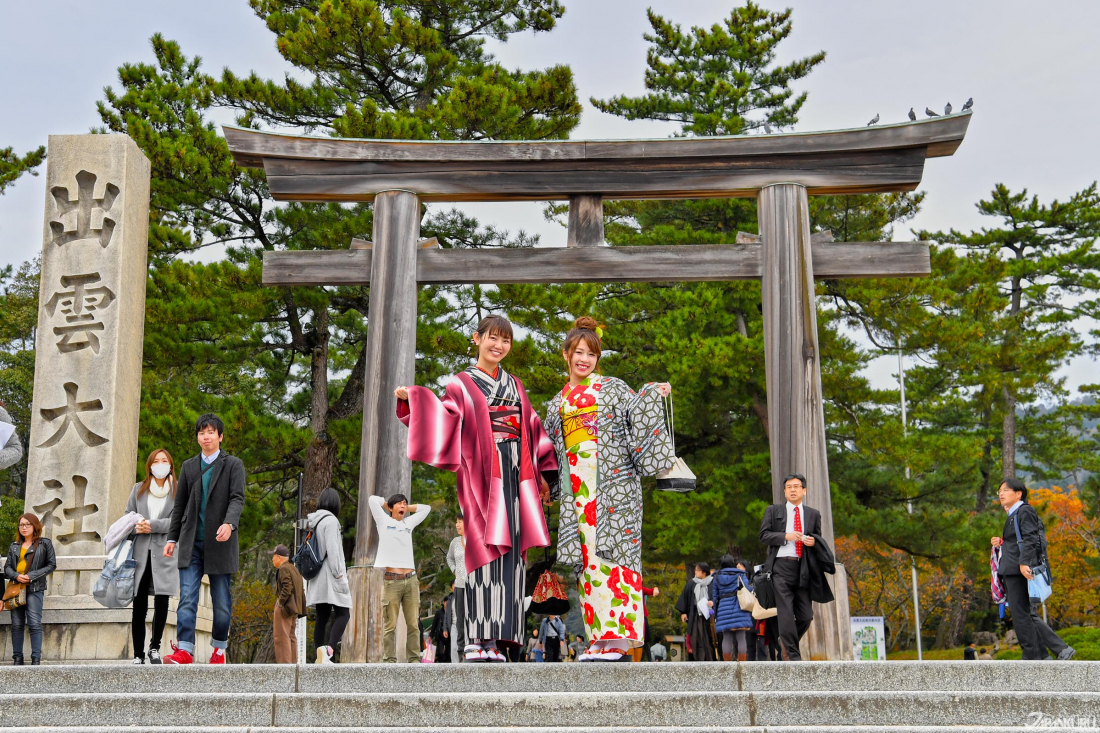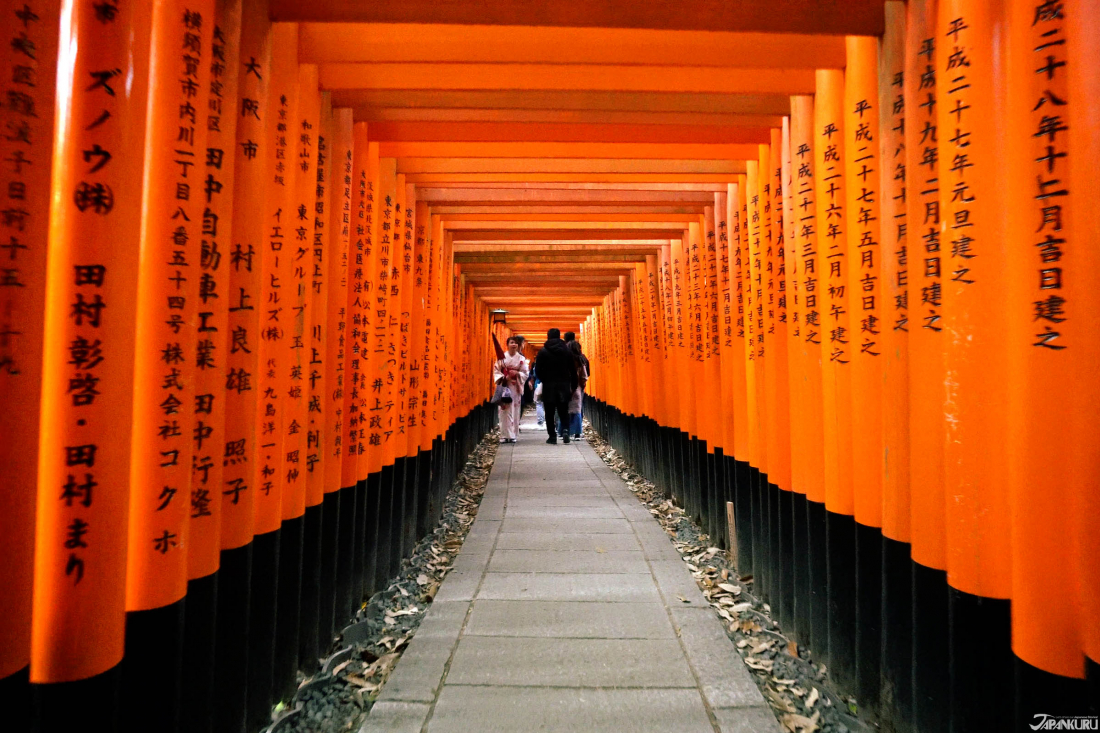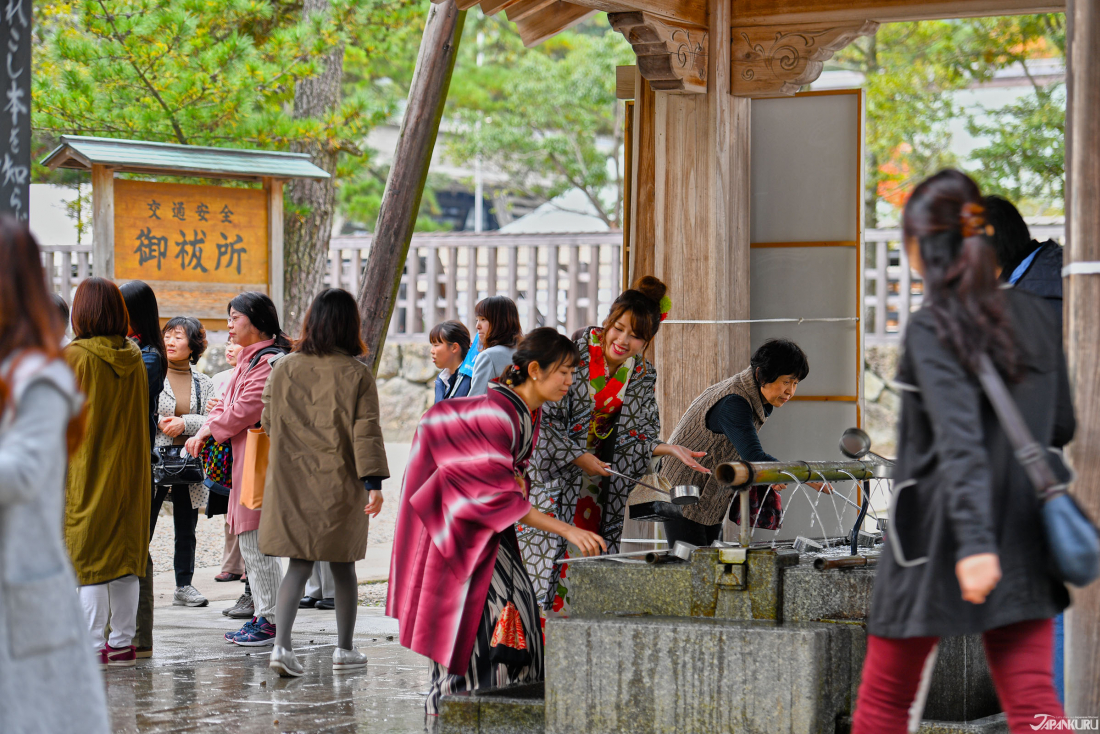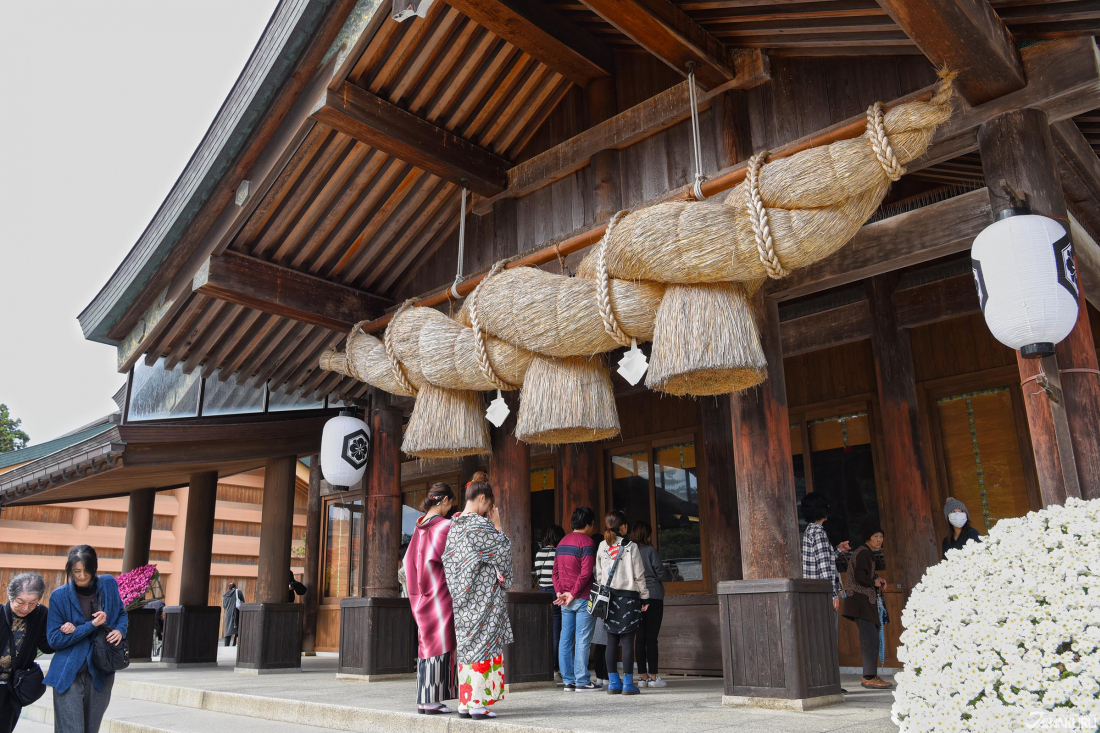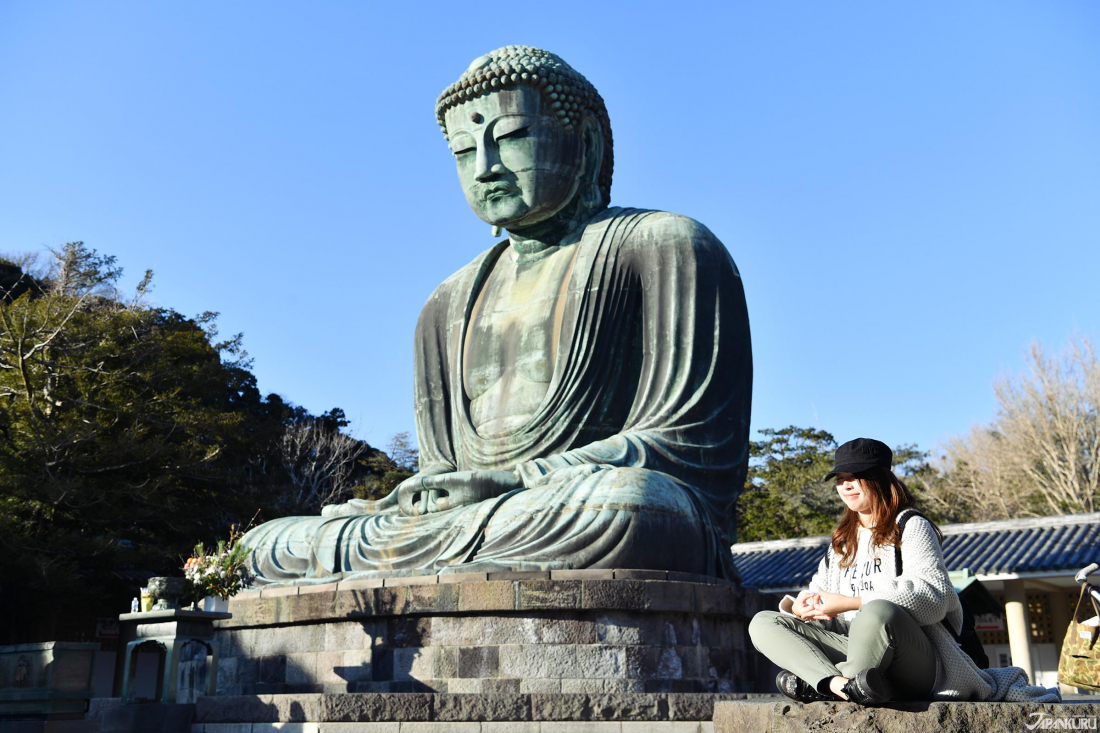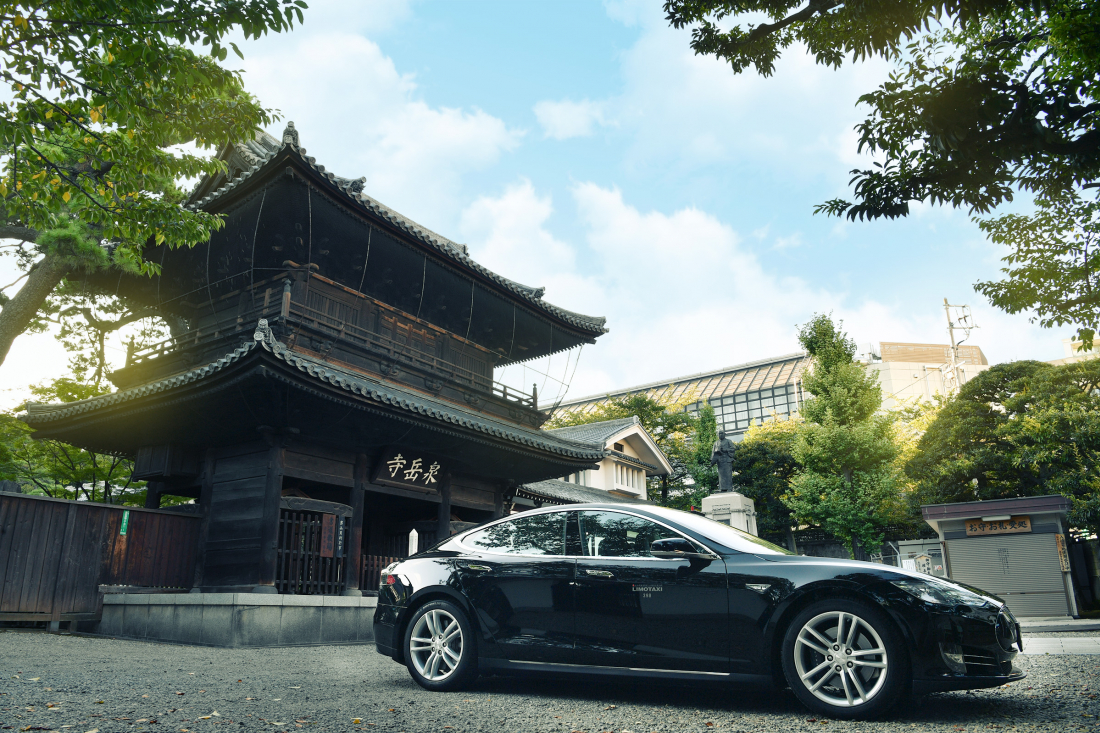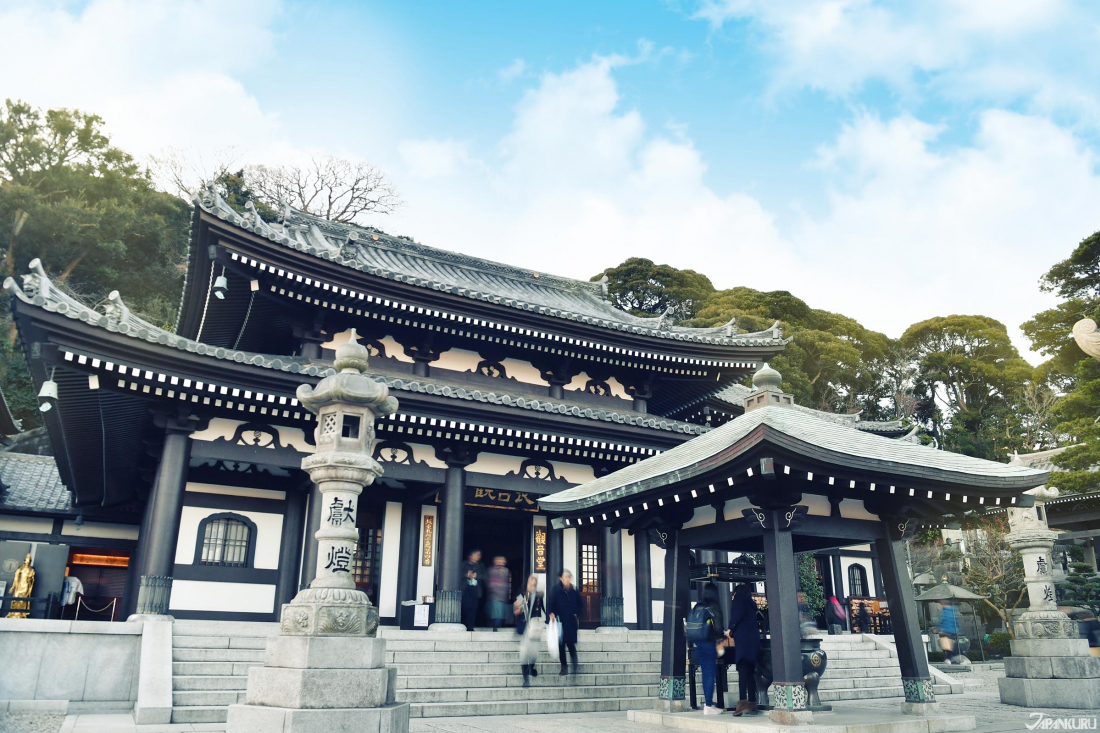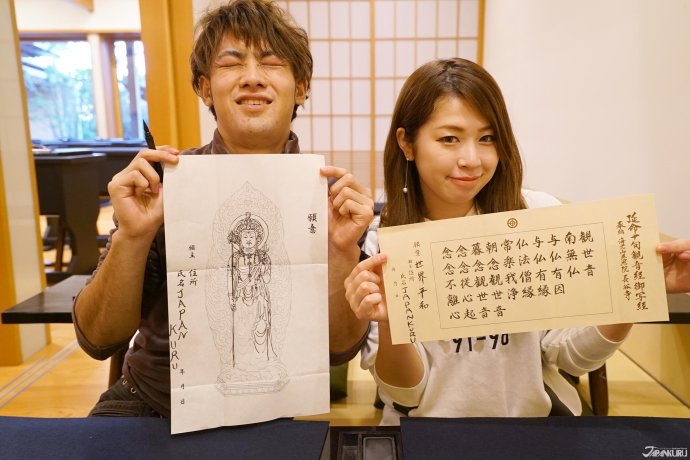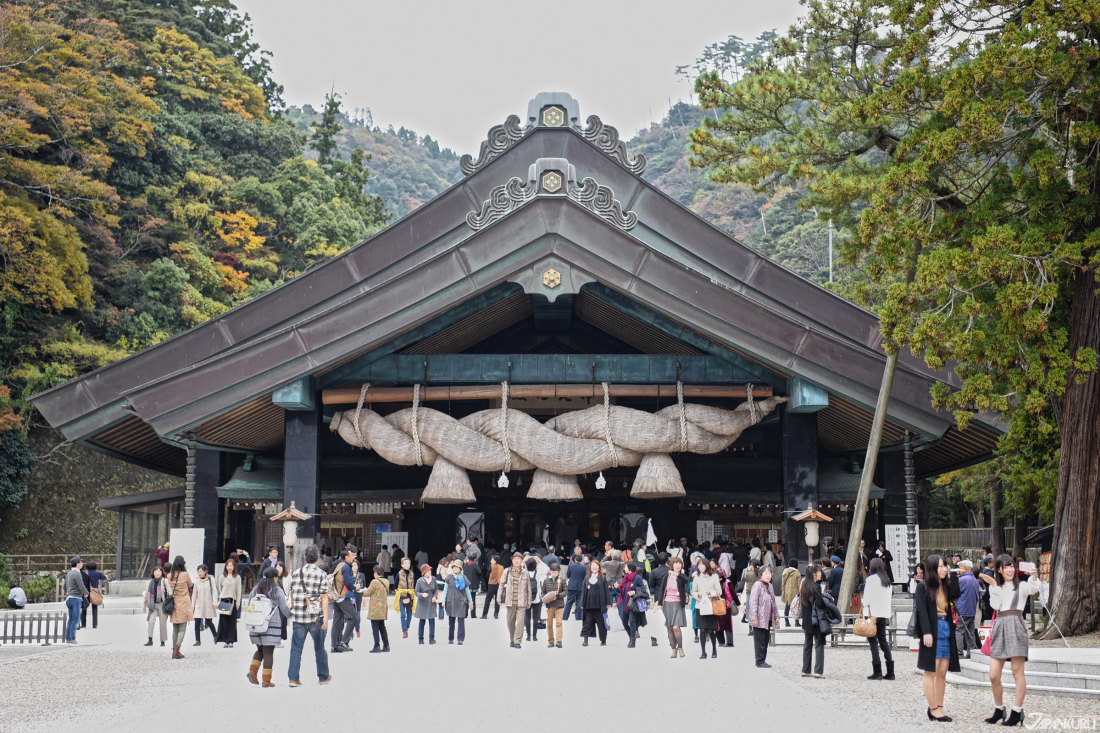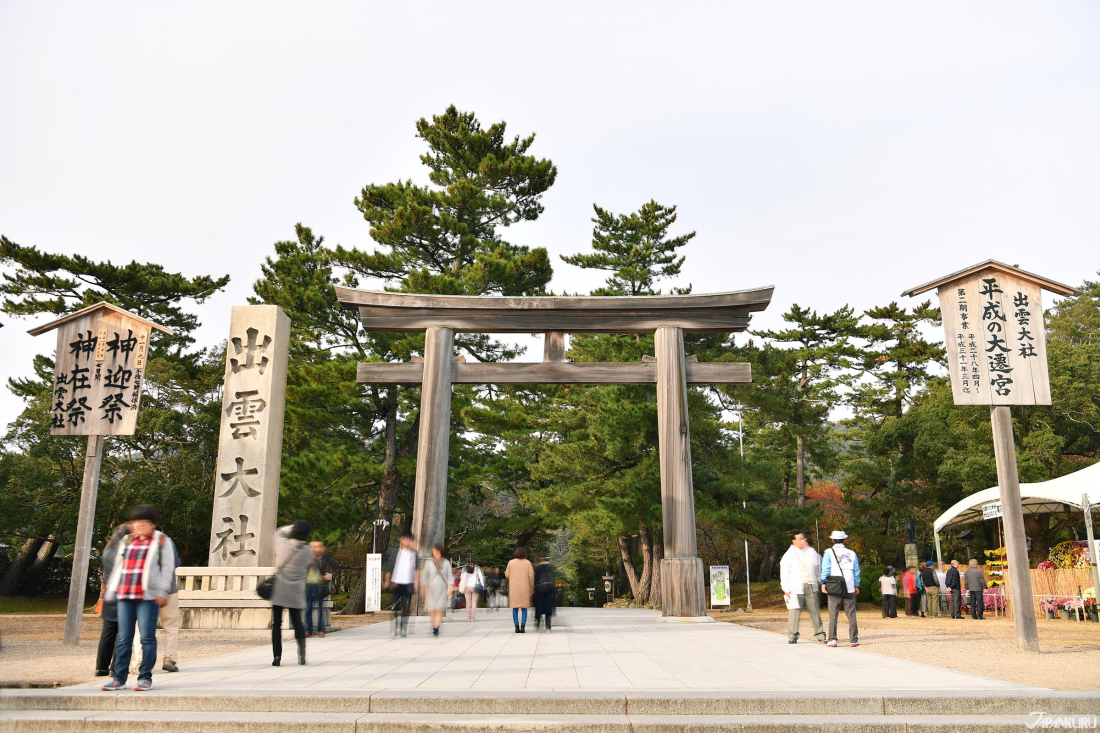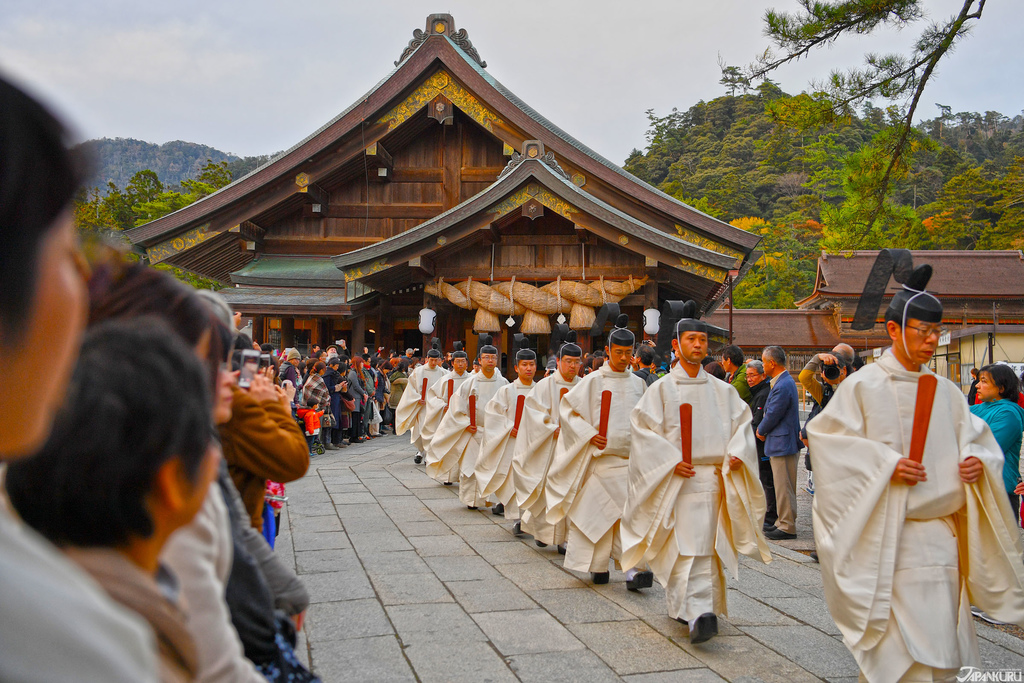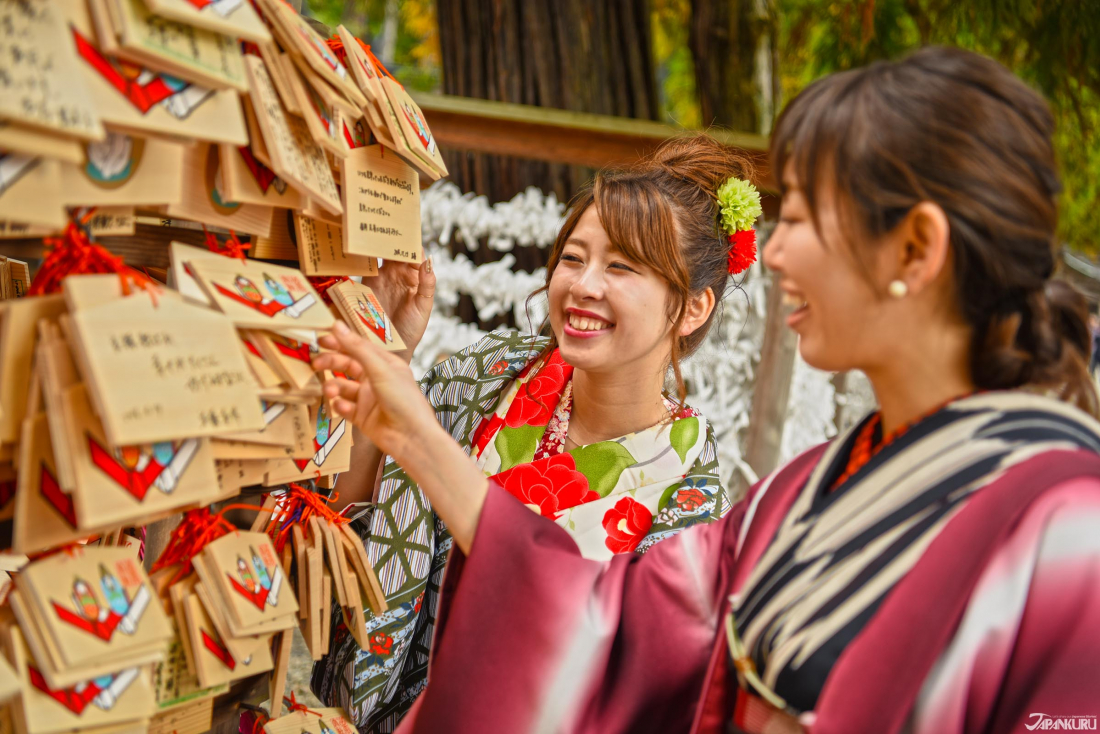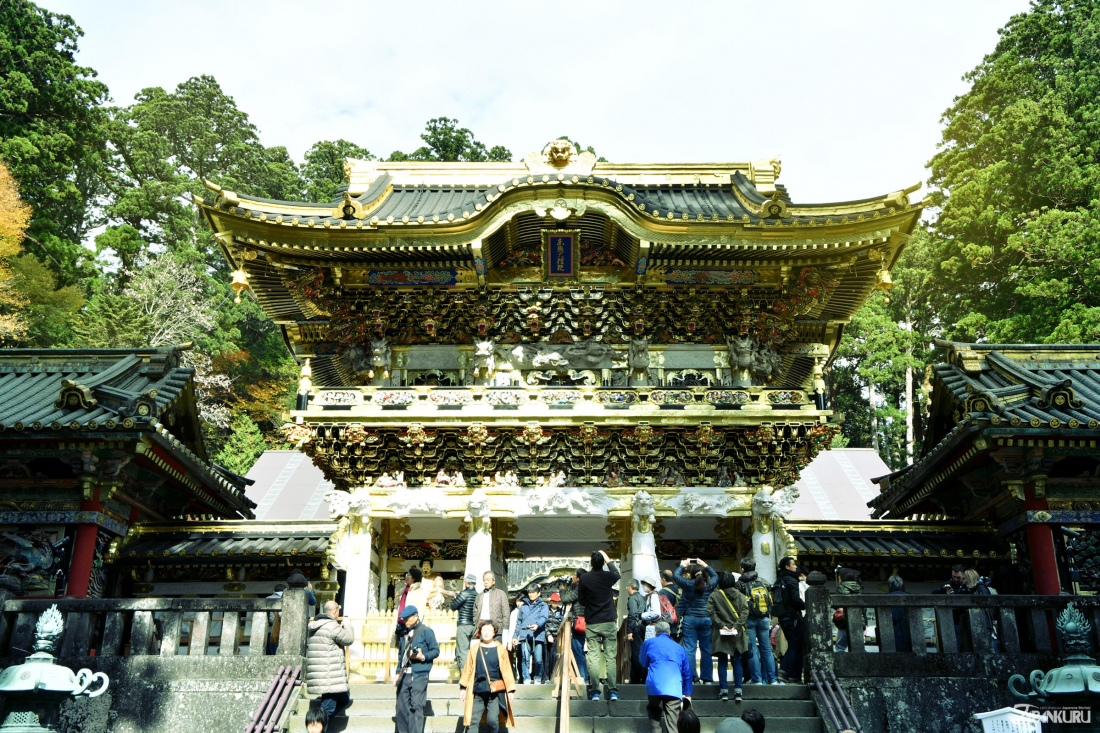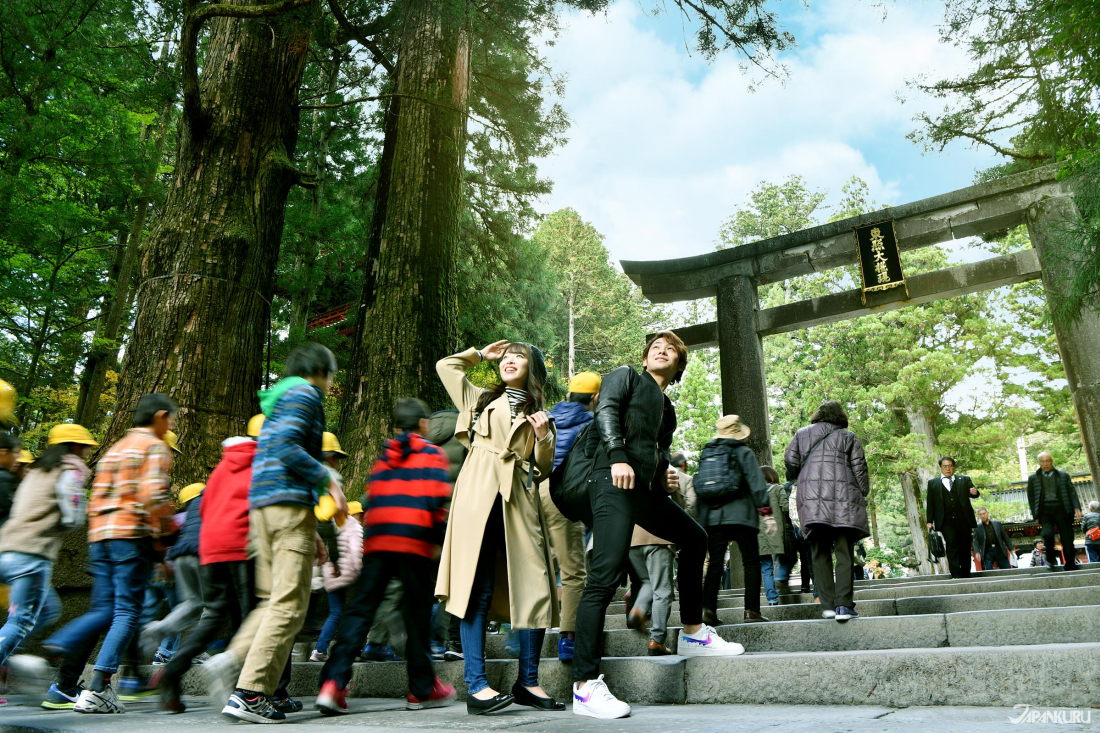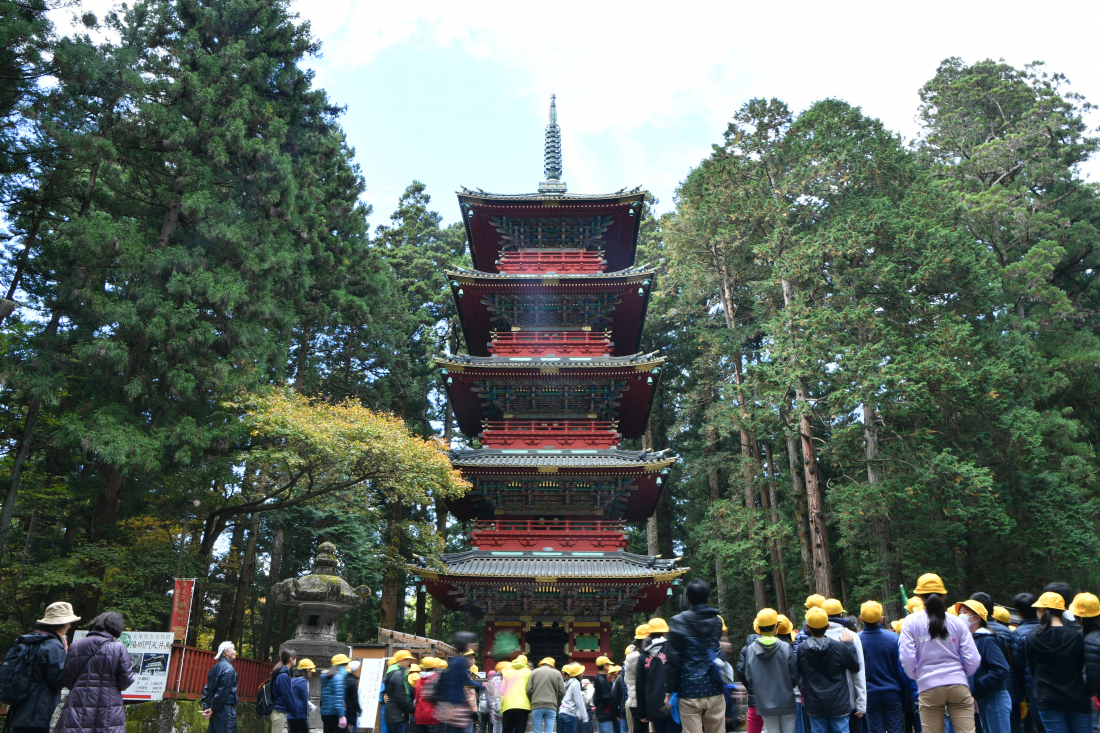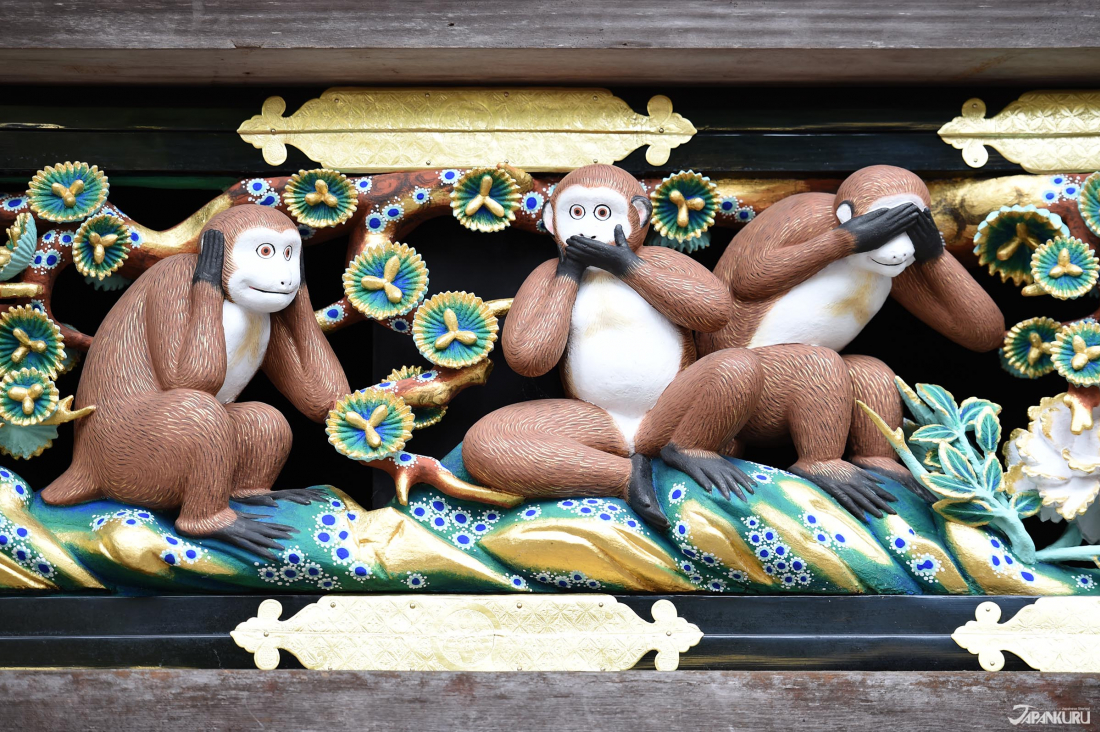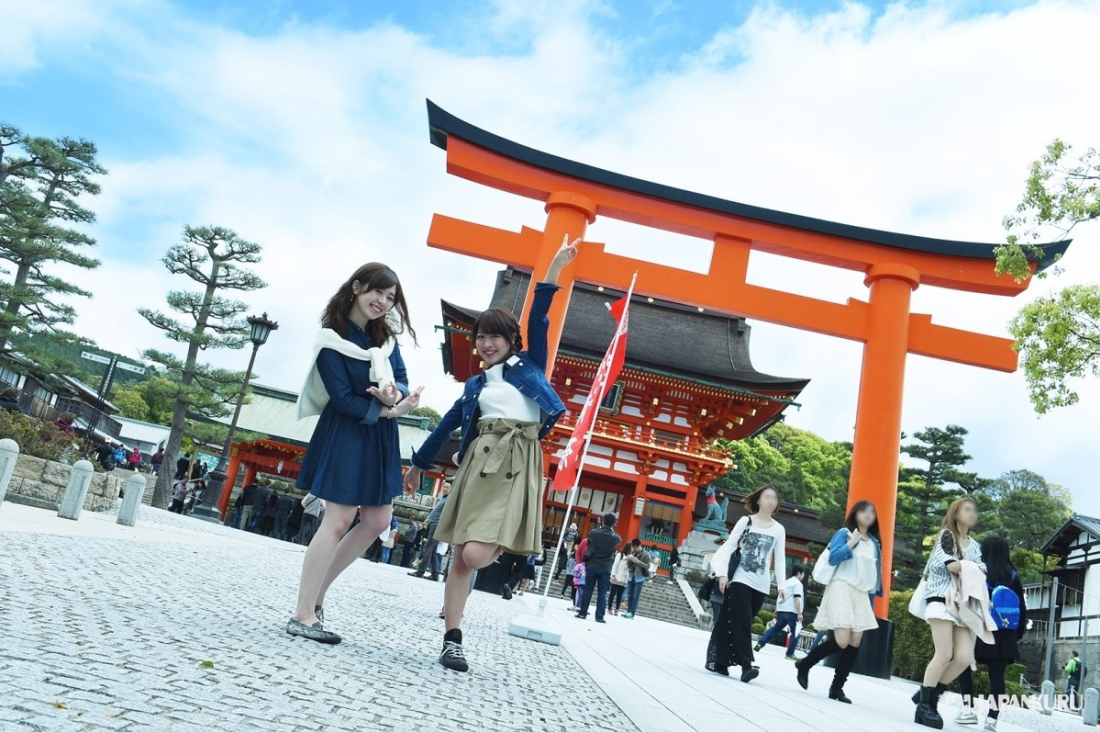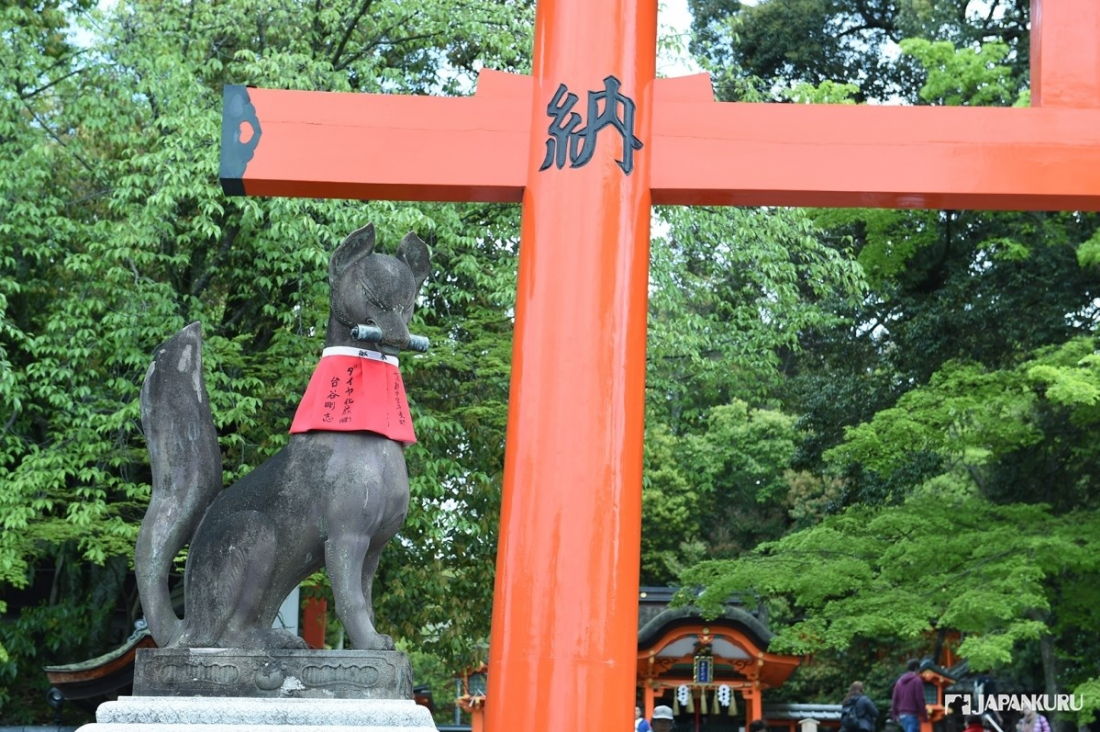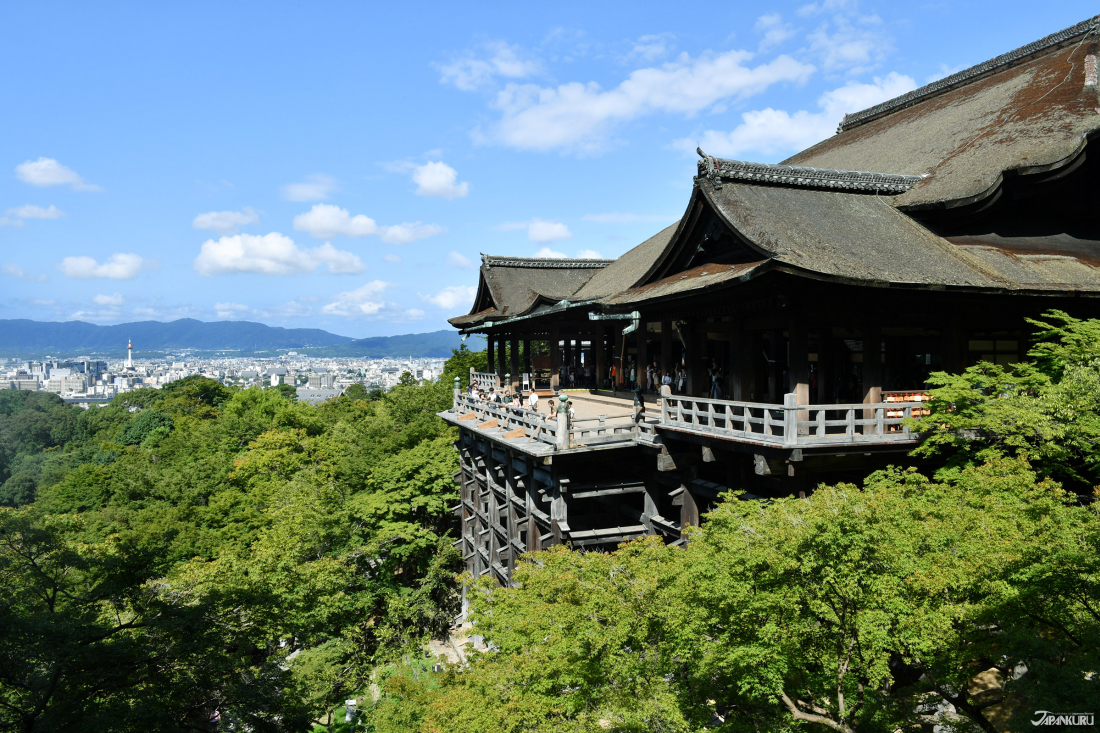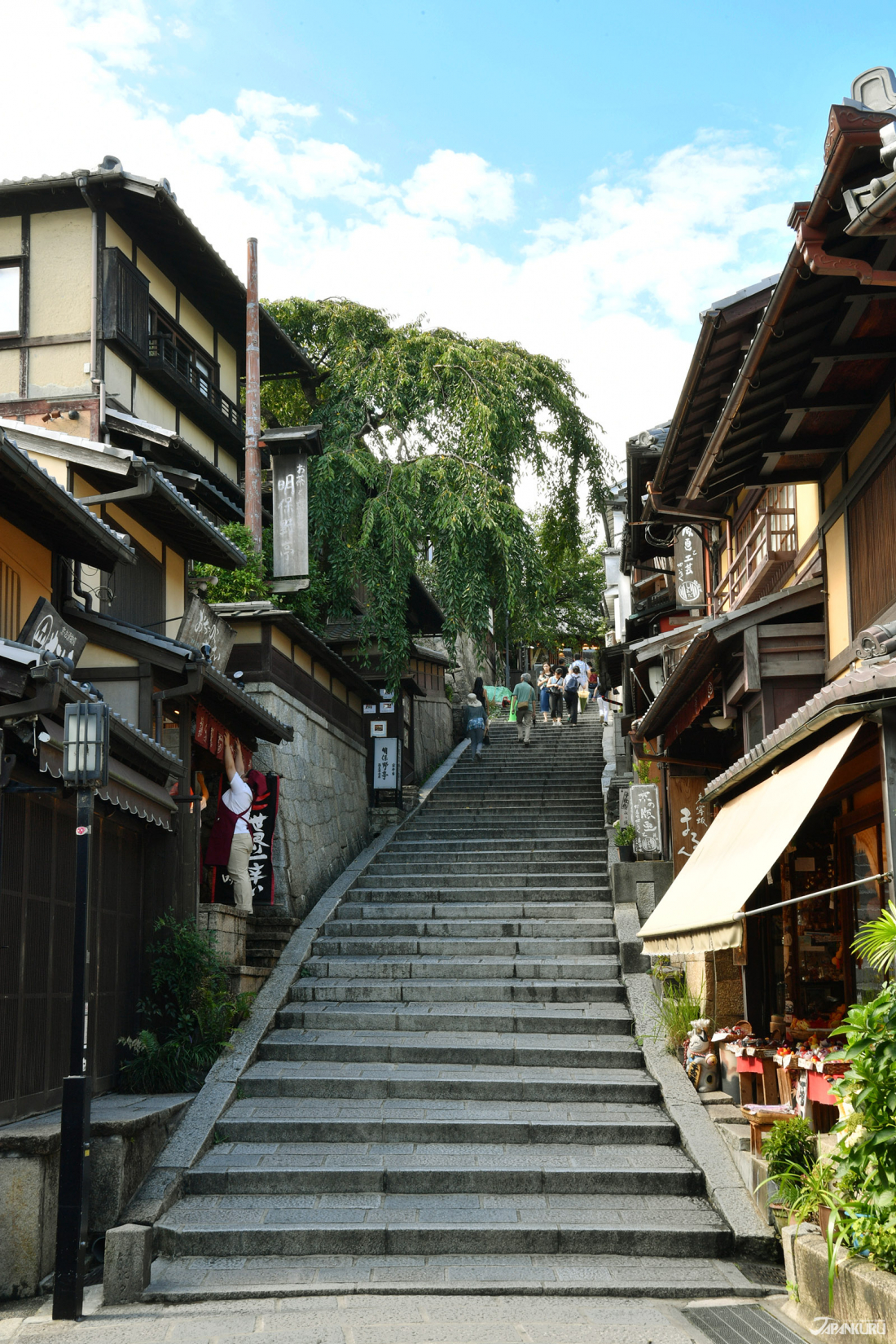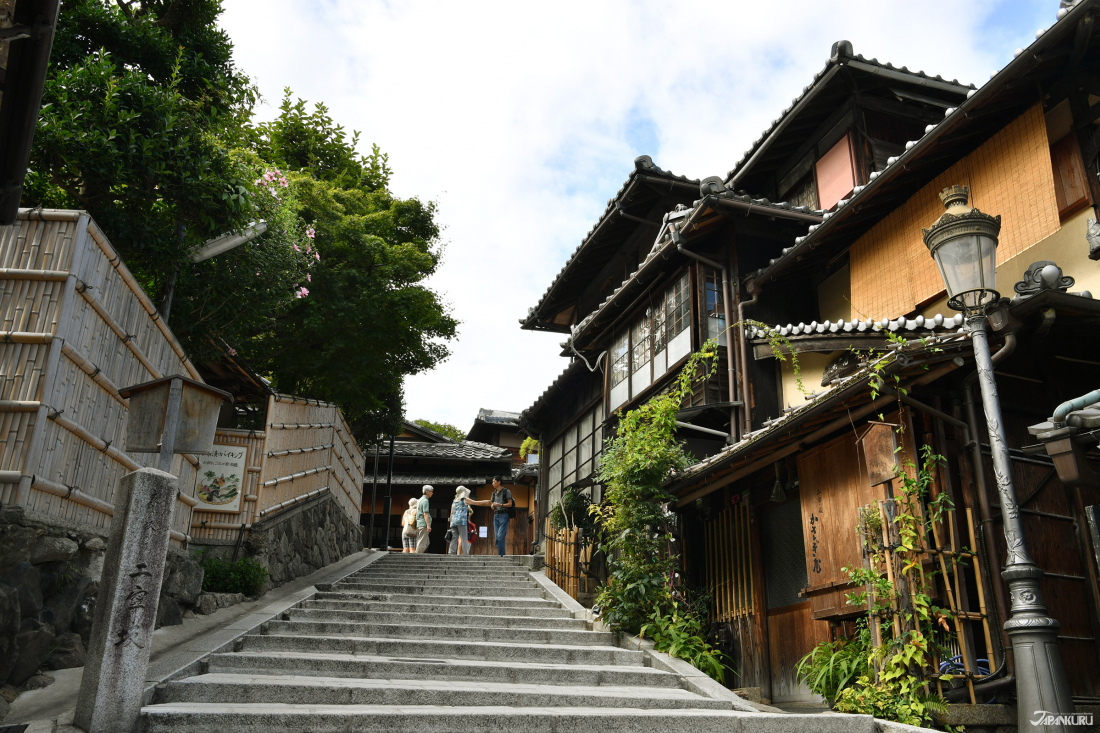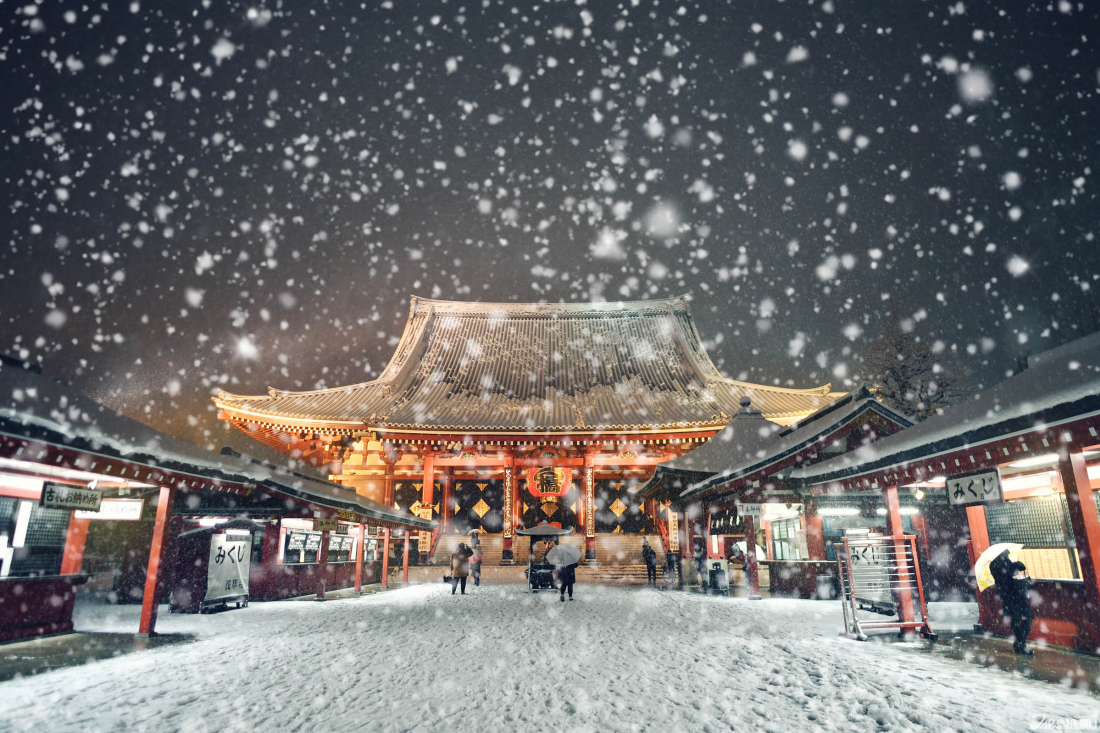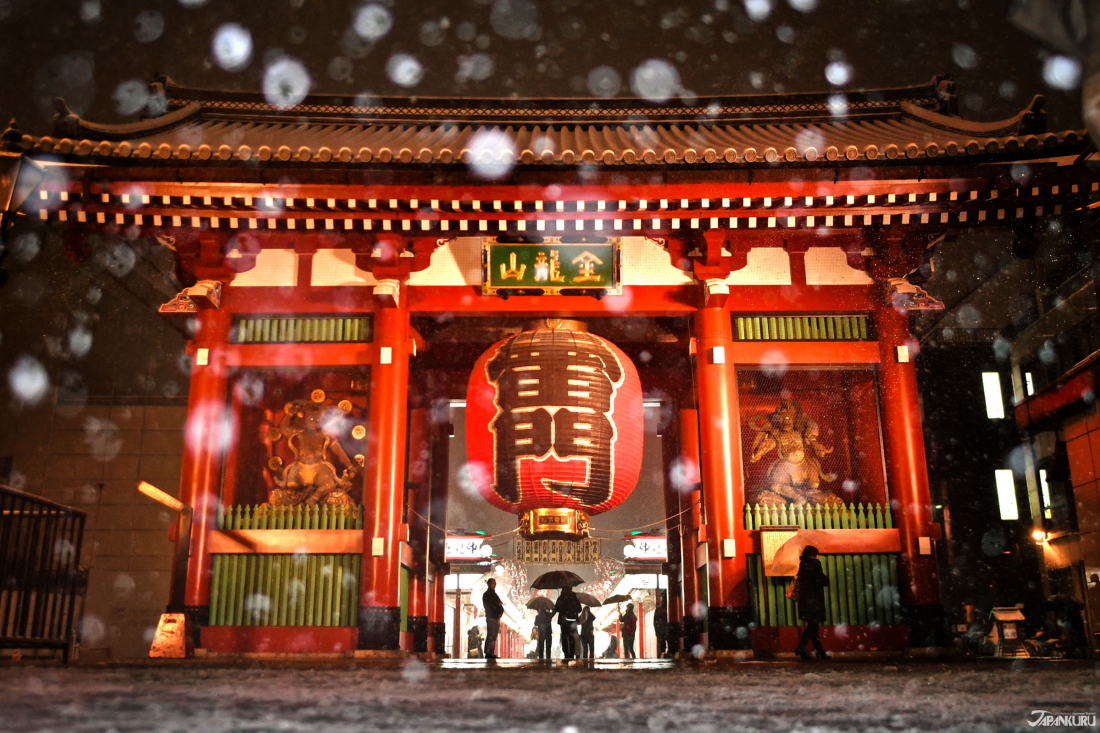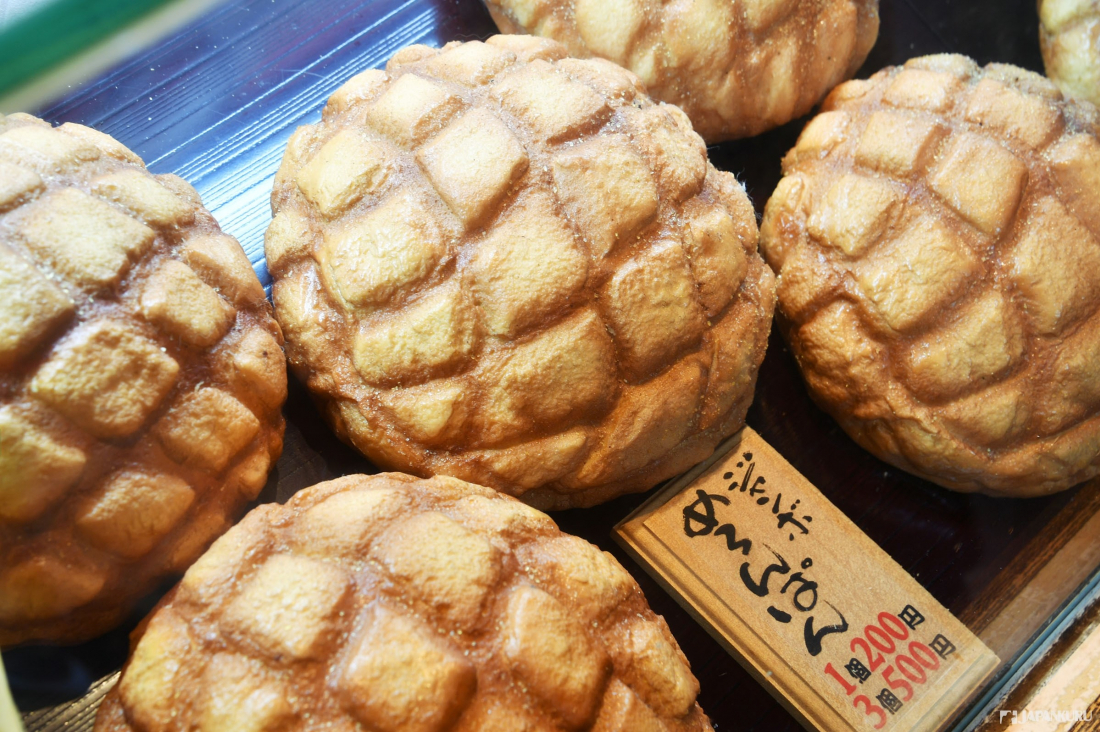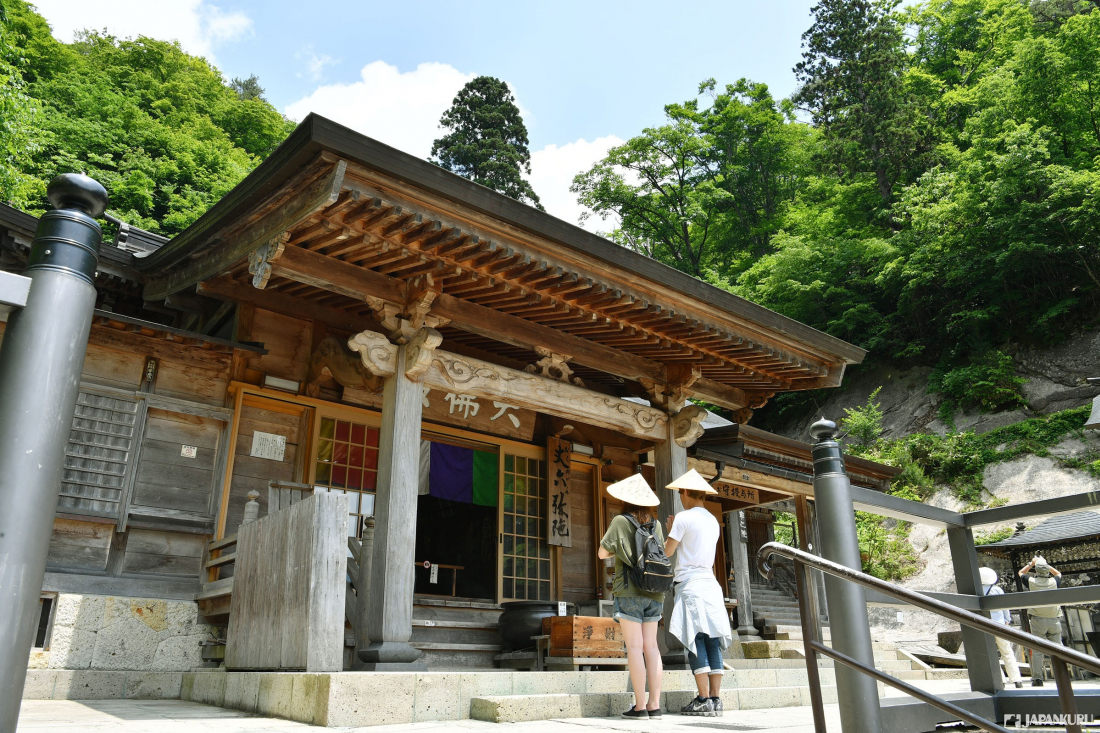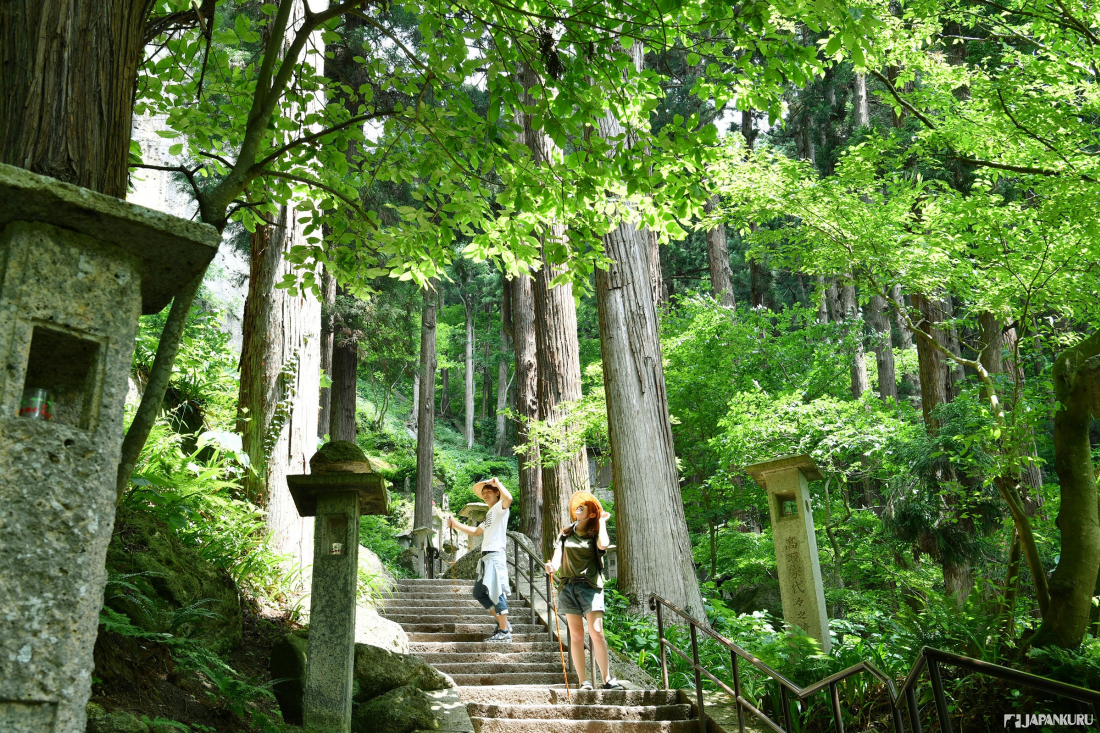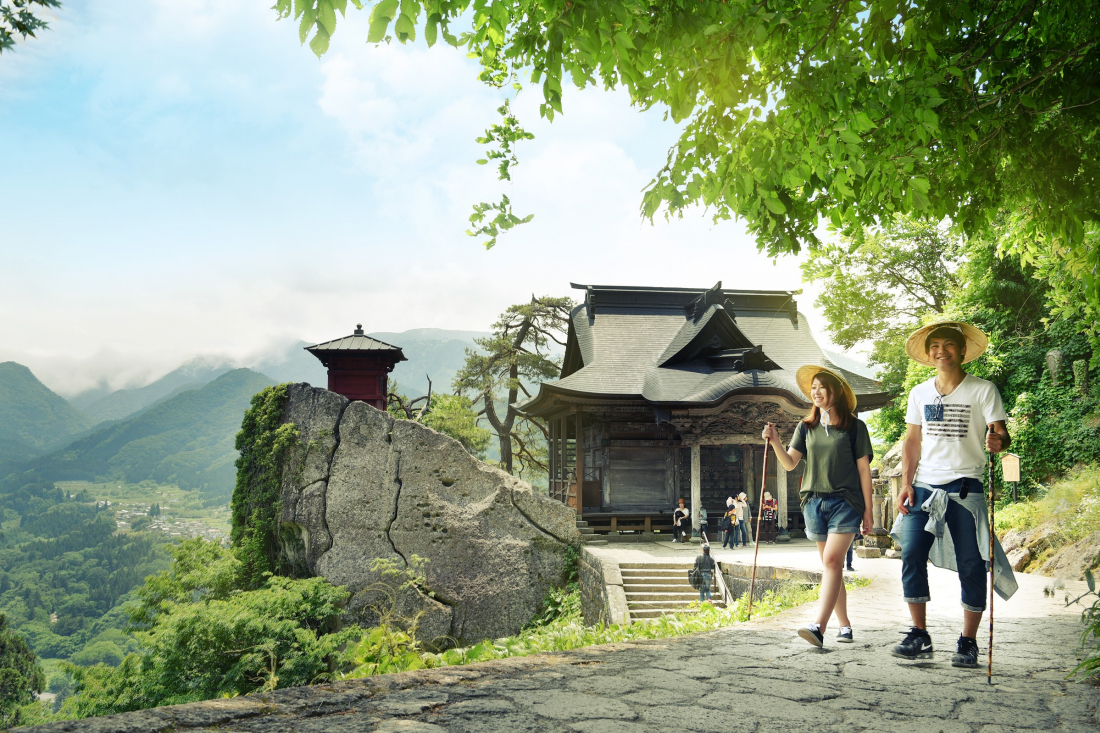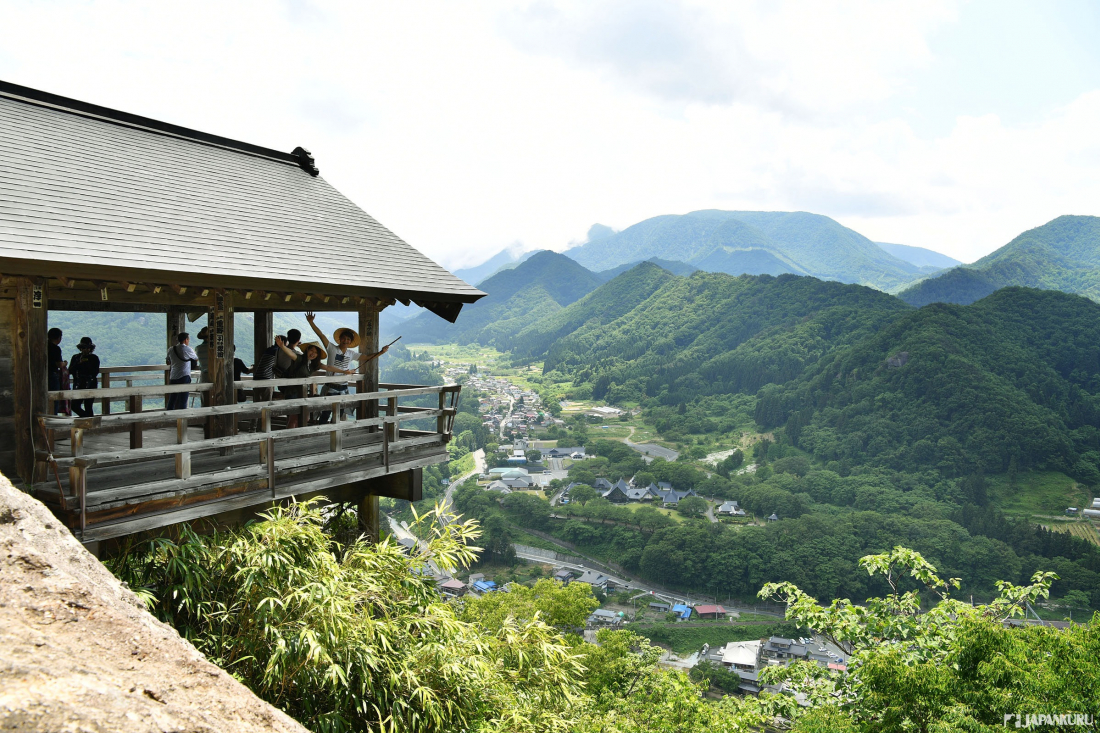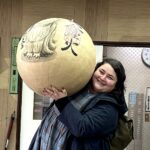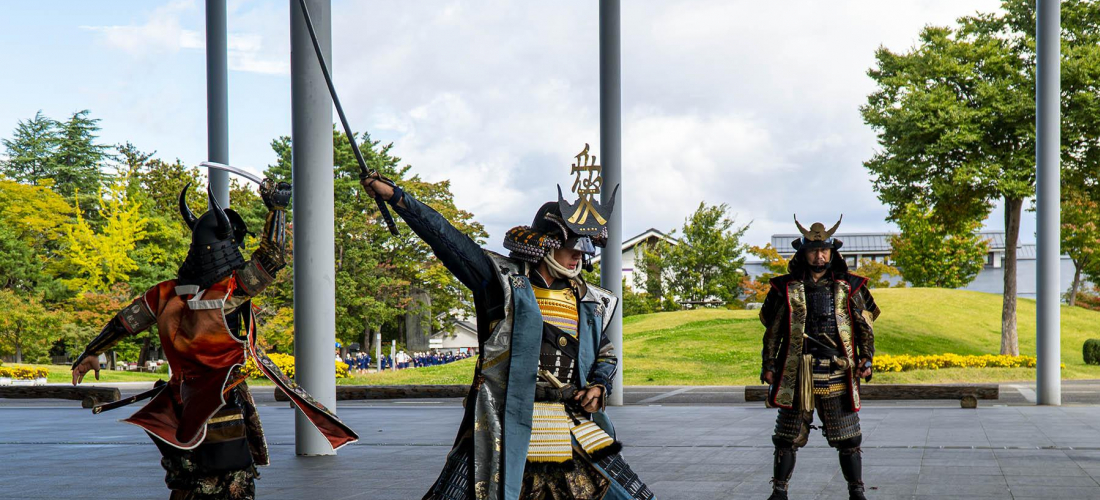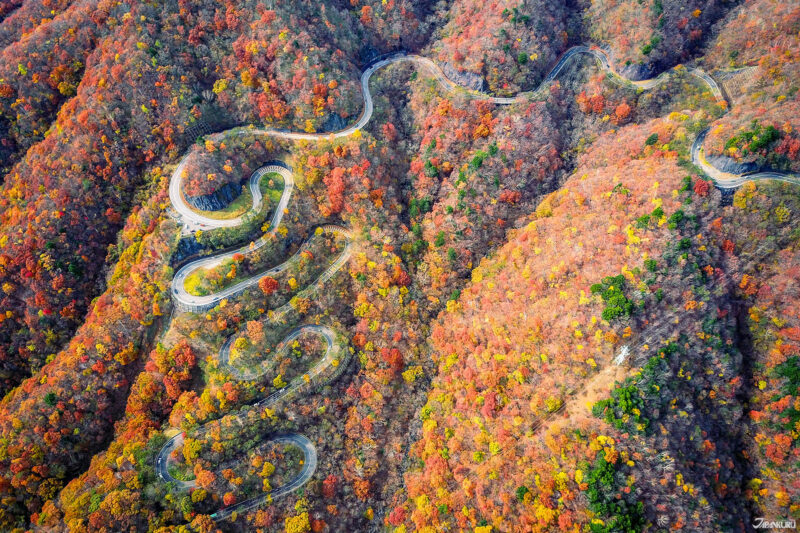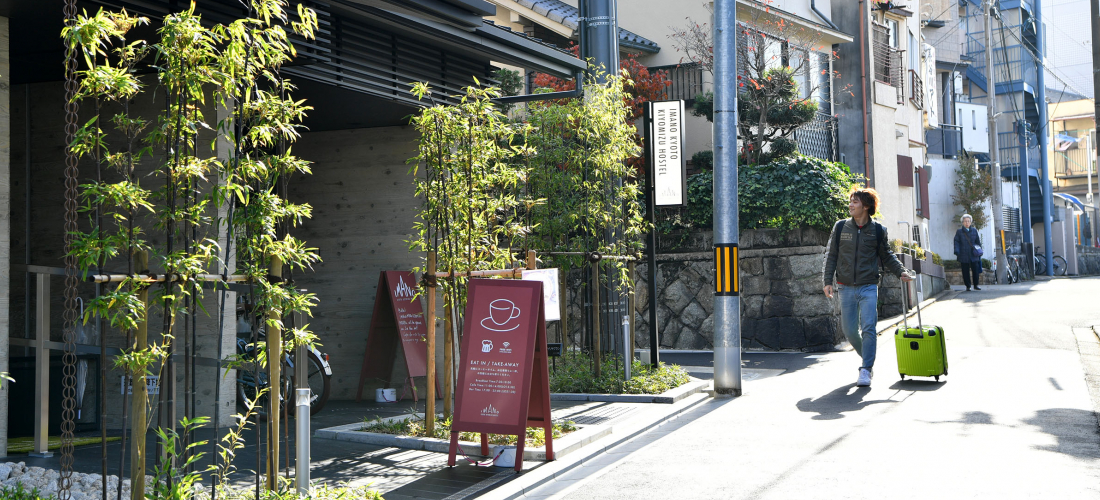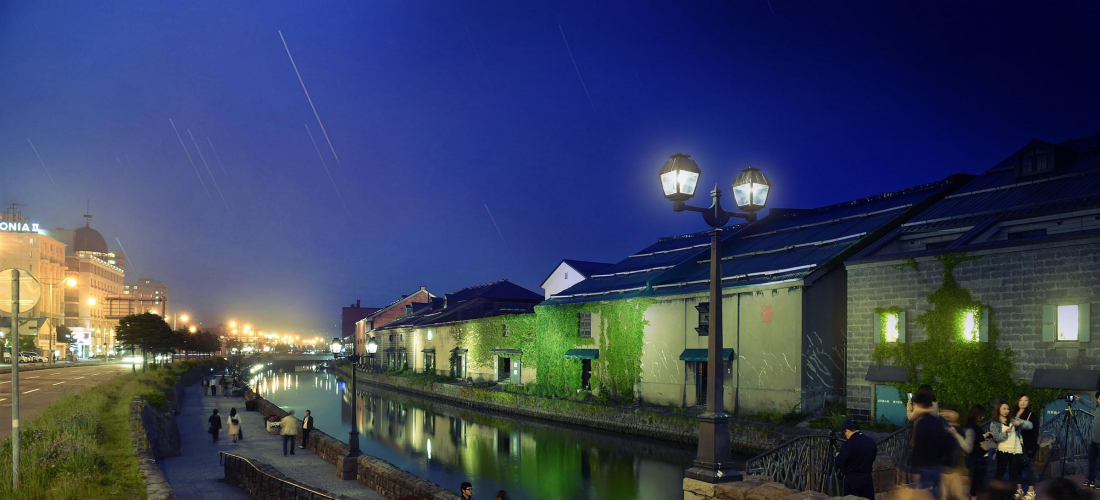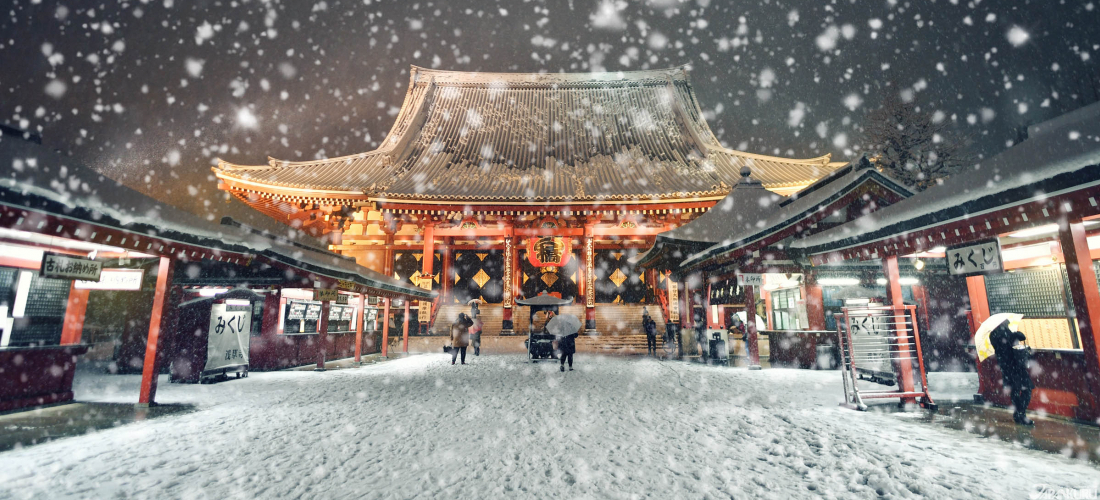
CONTENTS
Visiting the Meiji Shrine? How about Sensoji Temple, Fushimi Inari Shrine, or Kiyomizudera Temple? Do you know what makes a Japanese shrine a shrine, and a Japanese temple a temple?
Temples and Shrines – Religion in Japan
No matter how many times you've visited Japan, you're bound to find new shrines and temples all around the country, each one a beautiful structure built for spiritual purposes. Japan has a long history when it comes to spiritual beliefs, from ancient folklore to the more recent introduction of Christian, Muslim, and even Jewish communities. But when it comes to the religions of Japan, the reason these temples and shrines were built, most Japanese people live their lives interspersed with the rituals of two belief systems: Shinto and Buddhism. Shinto has been a part of Japanese culture in some shape or form for close to 2,000 years, while Buddhism was brought over from China a few hundred years later, and the two mixed and mingled throughout Japan's history, until they were once again delineated as totally separate religions by Japanese leadership in the 19th century.
What’s the Difference Between Shrines and Temples in Japan?
So, what does that religious history have to do with shrines and temples in Japan? Well, there are lots of differences and similarities between Japanese shrines and temples, and each individual place of worship is unique, but if you're looking for the simple answer:
Temples = Buddhism
Shrines are built to worship and celebrate the gods of Japan's traditional Shinto religion, and while temples might look similar, they're full of Buddhist shrines and icons.
Shrines and Shinto
Shinto is sometimes called an indigenous religion of Japan, and it's the country's most widespread system of beliefs: a unique polytheistic mix of historical legends, mythology, and animism! Shinto tradition holds that there are eight million gods or spirits, called "kami" (神), which can each be mythological figures, the spirits of natural features (like waterfalls or large rocks and trees), or even the spirits of venerated historical figures. These kami are enshrined and worshipped at about 100,000 different shrines all over Japan.
How to Identify a Shrine:
· Etymology: In Japanese, the word for shrine is "jinja" (神社), but sometimes shrine names use slightly different titles like jingu (神宮) or taisha (大社). If the name uses any of these words, it's a shrine!
· Architecture: Look for the torii (鳥居)! If you see the distinctive shape of a shrine gate (⛩) at the entrance or along the path. They're usually painted a bright red-orange.
Shrine Etiquette:
· Purification: On the way in, look for a hand-washing fountain called a chozuya (手水舎), where you can purify yourself before proceeding. The standard method is to take the water ladle and pour water over your left hand first, then your right, and then to sip a little water (out of your hand!) and rinse your mouth with it.
· Prayers: At shrines, prayers start with a greeting to the gods! The process is codified: first you bow twice, then you clap your hands twice, letting the kami know that you'd like their attention. Make your prayers with your hands still together, and finally to finish your prayer you bow one last time
Temples and Buddhism
Buddhism arrived in Japan from the Silk Road via Chinese and Korean sea travelers and became entrenched during the 6th century, eventually becoming a major religion, to the point that almost 70% of Japan's population adheres to Buddhist beliefs today. Of course, Buddhism follows the teachings of the Buddha, a single figure very different from the many gods of Shinto.
How to Identify a Temple:
· Etymology: The word for temple is "tera" (寺), and so temple names frequently end with this character. The character "寺" can also be read as "ji," however, so many temples use that pronunciation instead! Additionally, some temple names end with "in" (院), as well.
· Architecture: Instead of the sleek torii shrine gates found at Shinto shrines, temples often have gates called "mon" (門). These striking gates are usually like small buildings, forming a roof overhead, and often have statues placed on either side.
Temple Etiquette:
· Purification: In the courtyard of the temple buildings, or even right in front, you'll often find incense smoldering in large sand-filled burners. Waft a little of it your way to purify yourself before proceeding.
· Prayer: Instead of the complicated routine of Shinto, for Buddhist prayers, you simply bring your hands together in a prayer position. Some temples also offer Buddhist scriptures that you can try to copy over as a form of prayer.
Bonus: If you're looking for giant statues of Buddha, there are a dozen or so around Japan, but the three most famous giant Buddhas are at Todai-ji Temple (東大寺) in Nara, Kotoku-in Temple (高徳院) in Kamakura, and Hoko-ji Temple (方広寺) in Kyoto.
Famous Shrines and Temples
3 Must-See Shrines
Izumo Taisha (出雲大社) is found in Shimane Prefecture, and it's one of the most famous shrines in Japan thanks to its status as one of the oldest―said to have been established even earlier than the 2,000-year-old Ise Jingu (伊勢神宮). Legend has it that all of the eight million gods of Japan gather together in Izumo every fall, making it an especially spiritually auspicious location.
The Izumo Shrine is also home to a god of matchmaking, so people looking for love often drop in to pray for a little extra luck in the romance department, and it's a popular date spot for couples!
Izumo Taisha (出 雲 大 社)
195 Taishacho Kizukihigashi, Izumo, Shimane
💴: Open Access
The Nikko Tosho-gu Shrine (日光東照宮), is located in Tochigi Prefecture, not far from the big city of Tokyo. While shrines tend to be fairly simply decorated wooden buildings, perhaps colored with a coat of bright vermillion paint, Nikko Toshogu is famous for its lavish decorations. The structures on the shrine grounds are covered in gold leaf and carved in great detail―some of it more abstract, and some of it distinctly cut and painted into the shapes of animals and mythical creatures.
Aside from the impressive decorations, though, Nikko Tosho-gu Shrine is also known as the resting place of Tokugawa Ieyasu, one of Japan's main unifiers and one of the most important figures in Japanese history!
Nikko Tosho-gu (日光東照宮)
2301 Sannai, Nikko, Tochigi
💴: Adults (high school and up) 1300 yen · Children 450 yen
The Fushimi Inari Taisha (伏見稲荷大社) is a complex of sanctuaries located in the southern suburbs of Kyoto, and the main shrine for the god Inari. One hallmark of an Inari shrine is the huge number of orange shrine gates lining the paths, an image you might have seen online, or even in a scene from the movie Memoirs of a Geisha. At Kyoto's Fushimi Inari Shrine, the many torii gates dot the paths all the way up to the top of a small mountain, and a hike to the summit involves at least an hour, and many hundreds of stairs!
The views at Fushimi Inari are not to be missed, but if you want to see it without the crowds, we recommend you come early in the morning, or a little after sunset!
Fushimi Inari Taisha (伏見稲荷大社)
68 Fukakusa Yabunouchicho, Fushimi, Kyoto
💴: Open Access
3 Popular Temples
Kiyomizudera Temple (清水寺) is an iconic part of the city of Kyoto, built in 780, and it has long been home to one of the oldest forms of Buddhism in Japan. Today it is especially a popular place during cherry blossom season in spring, and when the leaves change color in fall, since its hilltop positioning gives visitors an amazing view of the trees and the city beyond.
Kiyomizudera (清水寺)
294 Kiyomizu 1-chome, Higashiyama, Kyoto, Kyoto
💴: 400 yen
Looking to visit a temple in Tokyo? The first answer out of most people's mouths will be Sensoji Temple (浅草寺), at the heart of Tokyo's neighborhood of Asakusa. It's one of the most important temples in the capital city, and sees more than 14 million visitors in an average year. While the temple itself is majestic and the surrounding gardens are green and peaceful, many visitors flock to the fun strip of shops and stalls lined up in front of the temple entrance, called Nakamise street (仲見世通り).
Sensoji (浅草寺)
2 Chome-3-1 Asakusa, Taito, Tokyo
💴: Open Access
The gate (or mon!) in front of the temple is called the Kaminari-mon (雷門), or Thunder Gate. It's probably more famous than the temple buildings themselves, and people often crowd around to take pictures here. Snow is actually a rare occurrence in Tokyo, so you're much more likely to find the gate bathed in sunshine!
Melon-pan (メロンパン), or melon bread, is a common treat around Japan, but the melon-pan around Sensoji is particularly popular.
Often called Yamadera (山寺), this temple located in Yamagata Prefecture is more properly known as Risshaku-ji (立石寺), but earned the nickname of Yamadera (literally mountain temple) thanks to its precipitously high mountainside placement. Yamadera was founded during the Heian period (794-1185) by one of the most famous monks of the time, Jikaku Daishi, and in the 17th century the temple was known to be the place where haiku poet Matsuo Basho wrote some of his most famous work.
To reach the temple you'll be climbing for about an hour, but the scenery might just make the hike worth it!
Yamadera (山寺)
4456-1 Yamadera, Yamagata
💴: 300 yen
Congratulations, You’re Now a Shrine and Temple Expert!
Travel can be fun, invigorating, and a little confusing, so hopefully this bit of information on shrines and temples will come in handy on your next trip to Japan! Now the most important question is, which will you visit first?
For more info and updates from Japan, check Japankuru for new articles, and don't forget to follow us on twitter, instagram, and facebook!
Half a lifetime ago I came to Japan for a semester abroad... and I never left. I guess I really like the place! I spent my first few years in Japan living in the middle of nowhere, so I'd love to hear your Tokyo recommendations via Japankuru's social media accounts!
COMMENT
FEATURED MEDIA
VIEW MORE 
A New Tokyo Animal Destination: Relax & Learn About the World’s Animals in Japan
#pr #japankuru #anitouch #anitouchtokyodome #capybara #capybaracafe #animalcafe #tokyotrip #japantrip #카피바라 #애니터치 #아이와가볼만한곳 #도쿄여행 #가족여행 #東京旅遊 #東京親子景點 #日本動物互動體驗 #水豚泡澡 #東京巨蛋城 #เที่ยวญี่ปุ่น2025 #ที่เที่ยวครอบครัว #สวนสัตว์ในร่ม #TokyoDomeCity #anitouchtokyodome

Shohei Ohtani Collab Developed Products & Other Japanese Drugstore Recommendations From Kowa
#pr #japankuru
#kowa #syncronkowa #japanshopping #preworkout #postworkout #tokyoshopping #japantrip #일본쇼핑 #일본이온음료 #오타니 #오타니쇼헤이 #코와 #興和 #日本必買 #日本旅遊 #運動補充能量 #運動飲品 #ช้อปปิ้งญี่ปุ่น #เครื่องดื่มออกกำลังกาย #นักกีฬา #ผลิตภัณฑ์ญี่ปุ่น #อาหารเสริมญี่ปุ่น

도쿄 근교 당일치기 여행 추천! 작은 에도라 불리는 ‘가와고에’
세이부 ‘가와고에 패스(디지털)’ 하나면 편리하게 이동 + 가성비까지 완벽하게! 필름카메라 감성 가득한 레트로 거리 길거리 먹방부터 귀여움 끝판왕 핫플&포토 스폿까지 총집합!
Looking for day trips from Tokyo? Try Kawagoe, AKA Little Edo!
Use the SEIBU KAWAGOE PASS (Digital) for easy, affordable transportation!
Check out the historic streets of Kawagoe for some great street food and plenty of picturesque retro photo ops.
#pr #japankuru #도쿄근교여행 #가와고에 #가와고에패스 #세이부패스 #기모노체험 #가와고에여행 #도쿄여행코스 #도쿄근교당일치기 #세이부가와고에패스
#tokyotrip #kawagoe #tokyodaytrip #seibukawagoepass #kimono #japantrip

Hirakata Park, Osaka: Enjoy the Classic Japanese Theme Park Experience!
#pr #japankuru #hirakatapark #amusementpark #japantrip #osakatrip #familytrip #rollercoaster #retrôvibes #枚方公園 #大阪旅遊 #關西私房景點 #日本親子旅行 #日本遊樂園 #木造雲霄飛車 #히라카타파크 #สวนสนุกฮิราคาตะพาร์ค

🍵Love Matcha? Upgrade Your Matcha Experience With Tsujiri!
・160년 전통 일본 말차 브랜드 츠지리에서 말차 덕후들이 픽한 인기템만 골라봤어요
・抹茶控的天堂!甜點、餅乾、飲品一次滿足,連伴手禮都幫你列好清單了
・ส่องมัทฉะสุดฮิต พร้อมพาเที่ยวร้านดังในอุจิ เกียวโต
#pr #japankuru #matcha #matchalover #uji #kyoto #japantrip #ujimatcha #matchalatte #matchasweets #tsujiri #말차 #말차덕후 #츠지리 #교토여행 #말차라떼 #辻利抹茶 #抹茶控 #日本抹茶 #宇治 #宇治抹茶 #日本伴手禮 #抹茶拿鐵 #抹茶甜點 #มัทฉะ #ของฝากญี่ปุ่น #ชาเขียวญี่ปุ่น #ซึจิริ #เกียวโต

・What Is Nenaito? And How Does This Sleep Care Supplement Work?
・你的睡眠保健品——認識「睡眠茶氨酸錠」
・수면 케어 서플리먼트 ‘네나이토’란?
・ผลิตภัณฑ์เสริมอาหารดูแลการนอน “Nenaito(ネナイト)” คืออะไร?
#pr #japankuru #sleepcare #japanshopping #nenaito #sleepsupplement #asahi #睡眠茶氨酸錠 #睡眠保健 #朝日 #l茶胺酸 #日本藥妝 #日本必買 #일본쇼핑 #수면 #건강하자 #네나이토 #일본영양제 #อาหารเสริมญี่ปุ่น #ช้อปปิ้งญี่ปุ่น #ร้านขายยาญี่ปุ่น #ดูแลตัวเองก่อนนอน #อาซาฮิ

Japanese Drugstore Must-Buys! Essential Items from Hisamitsu® Pharmaceutical
#PR #japankuru #hisamitsu #salonpas #feitas #hisamitsupharmaceutical #japanshopping #tokyoshopping #traveltips #japanhaul #japantrip #japantravel

Whether you grew up with Dragon Ball or you just fell in love with Dragon Ball DAIMA, you'll like the newest JINS collab. Shop this limited-edition Dragon Ball accessory collection to find some of the best Dragon Ball merchandise in Japan!
>> Find out more at Japankuru.com! (link in bio)
#japankuru #dragonball #dragonballdaima #animecollab #japanshopping #jins #japaneseglasses #japantravel #animemerch #pr

This month, Japankuru teamed up with @official_korekoko to invite three influencers (originally from Thailand, China, and Taiwan) on a trip to Yokohama. Check out the article (in Chinese) on Japankuru.com for all of their travel tips and photography hints - and look forward to more cool collaborations coming soon!
【橫濱夜散策 x 教你怎麼拍出網美照 📸✨】
每次來日本玩,是不是都會先找旅日網紅的推薦清單?
這次,我們邀請擁有日本豐富旅遊經驗的🇹🇭泰國、🇨🇳中國、🇹🇼台灣網紅,帶你走進夜晚的橫濱!從玩樂路線到拍照技巧,教你怎麼拍出最美的夜景照。那些熟悉的景點,換個視角說不定會有新發現~快跟他們一起出發吧!
#japankuru #橫濱紅磚倉庫 #汽車道 #中華街 #yokohama #japankuru #橫濱紅磚倉庫 #汽車道 #中華街 #yokohama #yokohamaredbrickwarehouse #yokohamachinatown

If you’re a fan of Vivienne Westwood's Japanese designs, and you’re looking forward to shopping in Harajuku this summer, we’ve got important news for you. Vivienne Westwood RED LABEL Laforet Harajuku is now closed for renovations - but the grand reopening is scheduled for July!
>> Find out more at Japankuru.com! (link in bio)
#japankuru #viviennewestwood #harajuku #omotesando #viviennewestwoodredlabel #viviennewestwoodjapan #비비안웨스트우드 #오모테산도 #하라주쿠 #日本購物 #薇薇安魏斯伍德 #日本時尚 #原宿 #表參道 #japantrip #japanshopping #pr

Ready to see TeamLab in Kyoto!? At TeamLab Biovortex Kyoto, the collective is taking their acclaimed immersive art and bringing it to Japan's ancient capital. We can't wait to see it for ourselves this autumn!
>> Find out more at Japankuru.com! (link in bio)
#japankuru #teamlab #teamlabbiovortex #kyoto #kyototrip #japantravel #artnews
Photos courtesy of teamLab, Exhibition view of teamLab Biovortex Kyoto, 2025, Kyoto ® teamLab, courtesy Pace Gallery

Japanese Makeup Shopping • A Trip to Kamakura & Enoshima With Canmake’s Cool-Toned Summer Makeup
#pr #canmake #enoshima #enoden #에노시마 #캔메이크 #japanesemakeup #japanesecosmetics

⚔️The Robot Restaurant is gone, but the Samurai Restaurant is here to take its place. Check it out, and don't forget your coupon!
🍣신주쿠의 명소 로봇 레스토랑이 사무라이 레스토랑으로 부활! 절찬 쿠폰 발급중
💃18歲以上才能入場的歌舞秀,和你想的不一樣!拿好優惠券去看看~
#tokyo #shinjuku #samurairestaurant #robotrestaurant #tokyotrip #도쿄여행 #신주쿠 #사무라이레스토랑 #이색체험 #할인이벤트 #歌舞伎町 #東京景點 #武士餐廳 #日本表演 #日本文化體驗 #japankuru #japantrip #japantravel #japanlovers #japan_of_insta

Japanese appliance & electronics shopping with our KOJIMA x BicCamera coupon!
用JAPANKURU的KOJIMA x BicCamera優惠券買這些正好❤️
코지마 x 빅 카메라 쿠폰으로 일본 가전 제품 쇼핑하기
#pr #japankuru #japanshopping #kojima #biccamera #japaneseskincare #yaman #dji #osmopocket3 #skincaredevice #日本購物 #美容儀 #相機 #雅萌 #日本家電 #일본여행 #면세 #여행꿀팁 #일본쇼핑리스트 #쿠폰 #일본쇼핑 #일본브랜드 #할인 #코지마 #빅카메라 #japankurucoupon

